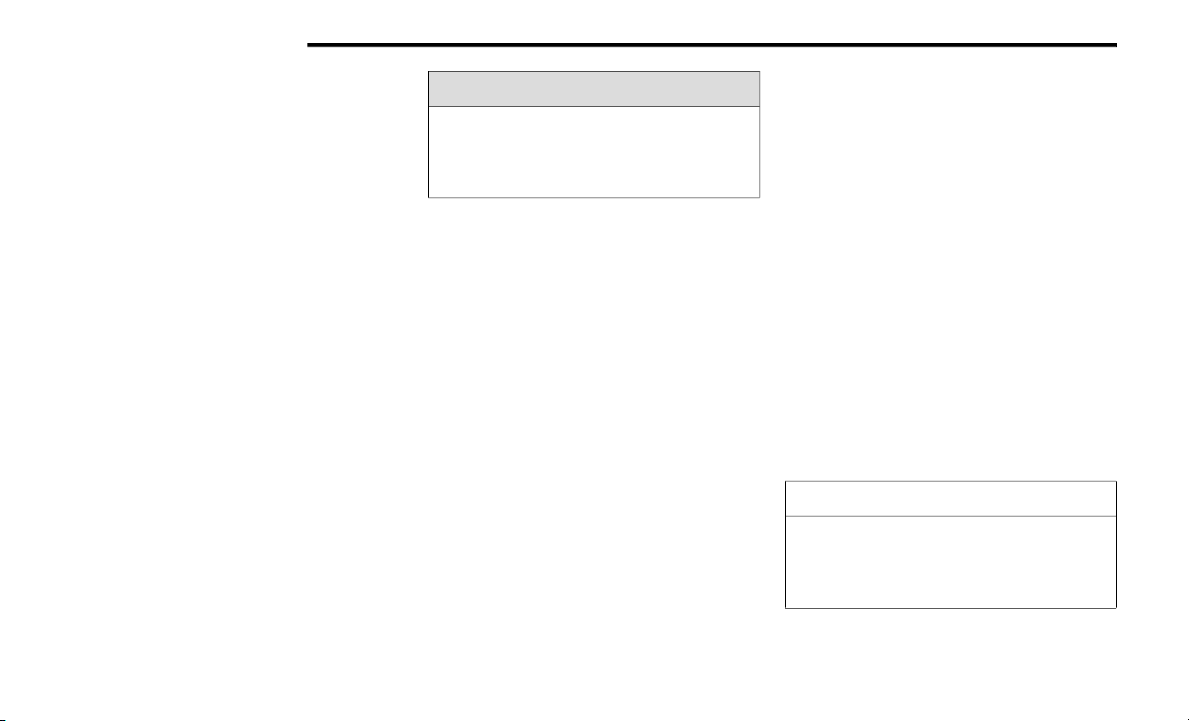Loading ...
Loading ...
Loading ...

120 STARTING AND OPERATING
You can start out (from a stop) in FIRST or
SECOND gear. Starting out in SECOND gear
can be helpful in snow or icy conditions.
Tap the gear selector forward or rearward to
select the desired gear after the vehicle is
brought to a stop.
If a requested downshift would cause the
engine to overspeed, that shift will not occur.
The system will ignore attempts to upshift at
too low of a vehicle speed.
Avoid using Cruise Control when AutoStick is
engaged because the transmission will not
shift automatically.
Transmission shifting will be more noticeable
when AutoStick is enabled.
The system may revert to automatic shift
mode if a fault or overheat condition is
detected.
To disengage AutoStick mode, return the gear
selector to the DRIVE position. You can shift in or
out of the AutoStick position at any time without
taking your foot off the accelerator pedal.
Torque Converter Clutch
A feature designed to improve fuel economy has
been included in the automatic transmission on
your vehicle. A clutch within the torque converter
engages automatically at calibrated speeds.
This may result in a slightly different feeling or
response during normal operation in the upper
gears. When the vehicle speed drops or during
some accelerations, the clutch automatically
disengages.
NOTE:
The torque converter clutch will not engage until
the transmission fluid is warm (usually after 1 to
3 miles [2 to 5 km] of driving). Because the
engine speed is higher when the torque converter
clutch is not engaged, it may seem as if the trans-
mission is not shifting properly when cold. This is
normal. The torque converter clutch will function
normally once the transmission is sufficiently
warm.
FOUR-WHEEL DRIVE OPERATION
1-SPEED FOUR-WHEEL DRIVE
(4WD) — I
F EQUIPPED
This feature provides on-demand four-wheel
drive (4WD). The system is automatic with no
driver inputs or additional driving skills
required. Under normal driving conditions,
the front wheels provide most of the traction.
If the front wheels begin to lose traction, power
is shifted automatically to the rear wheels.
The greater the front wheel traction loss, the
greater the power transfer to the rear wheels.
Additionally, on dry pavement under heavy
throttle input (where one may have no wheel
spin), torque will be sent to the rear in a
pre-emptive effort to improve vehicle launch
and performance characteristics.
WARNING!
Do not downshift for additional engine braking
on a slippery surface. The drive wheels could
lose their grip and the vehicle could skid,
causing a collision or personal injury.
CAUTION!
All wheels must have the same size and type
tires. Unequal tire sizes must not be used.
Unequal tire size may cause failure of the
power transfer unit.
21_KL_OM_EN_USC_t.book Page 120
Loading ...
Loading ...
Loading ...